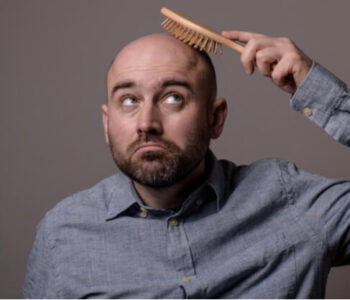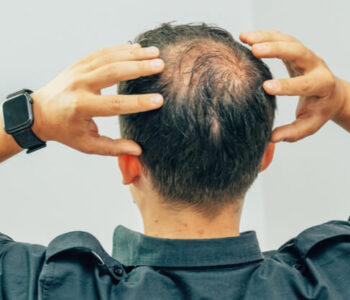In 30 seconds…
Beard growth begins at puberty and is largely a product of your genetics and testosterone levels. You can promote beard growth by maintaining healthy lifestyle habits, adopting a good skincare regimen and managing stress. While there is no miracle cure, we might see topical treatments for beard growth in the near future.
How to grow a beard faster
A beard is more than just facial hair. The ability to style, trim and shape your very own face fuzz can be a source of pride and self-esteem. But while some men seem to grow thick, long beards without even trying, for others, it can be a real struggle to encourage growth beyond a few stray beard hairs.
But whether you want to kickstart beard growth from scratch, or transform a patchy beard into a thicker, longer facial statement, the world of hair loss has expanded beyond just male pattern baldness.
Read on to learn more about the process of beard hair growth, the factors that encourage beard growth and what you need to do to get a thicker, fuller beard faster.
What is normal facial hair growth?
Beards grow in response to hormone changes during puberty, when testosterone levels begin to rise. Testosterone is naturally converted into a more potent hormone called dihydrotestosterone (DHT) in hair follicles, which stimulates the growth of facial hair.
Confusingly, DHT actually causes male pattern baldness by acting on hair follicles in the scalp to shrink and weaken them. But with facial skin, DHT acts on beard hair follicles to promote beard growth.
Facial hair growth begins at puberty
Beard growth typically starts during early puberty (from about 13-16 years old) but this can vary based on when testosterone levels begin to rise. Hairs begin to appear firstly on the chin and upper lip, and then spread to the cheeks, sideburns, and neck. The location and growth rate varies from person to person, based on several factors like genetics, ethnicity and age.
While initially patchy, hair density and coverage usually improves over time and (thankfully) the teenage beard grows quickly in most people.
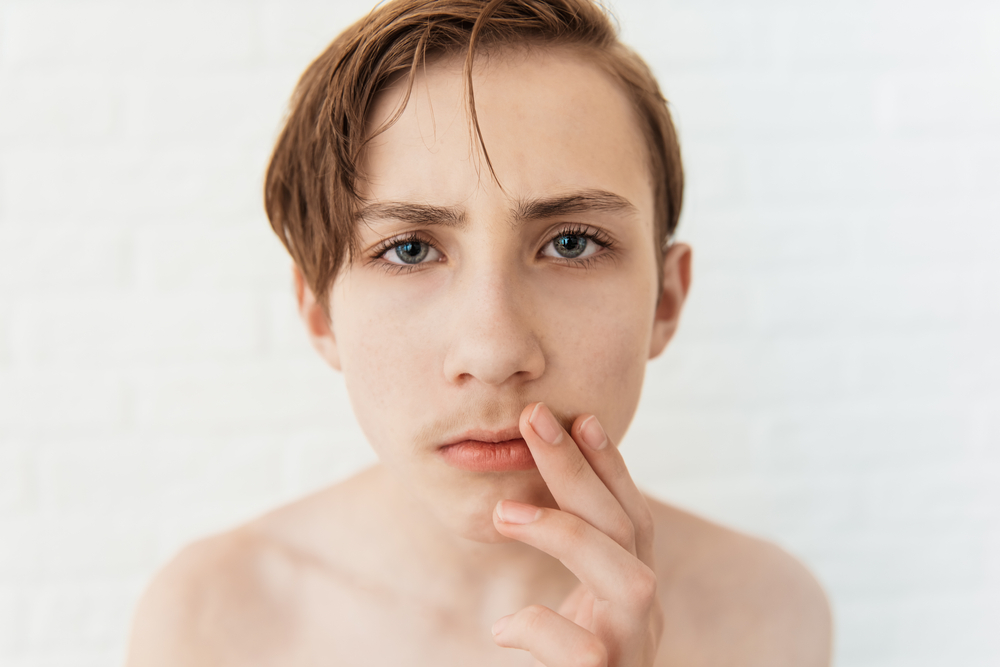
What’s happening in the hair follicles?
During the growth process, each facial hair follicle goes through three phases: the anagen or growth phase, the catagen or transitional phase, and the telogen or resting phase. The anagen phase is the active growth phase, where the hair grows from the root. The catagen phase is a brief transitional period where the hair stops growing, and the follicle begins to shrink. The telogen phase is the resting phase, where the hair falls out and makes way for new hair growth.
During puberty, testosterone levels rise and act on hair follicles around the body. In the beard area, it encourages hair follicle growth and kickstarts the beard.
How does beard hair compare to scalp hair?
They might be closely related in location, but beard hair is actually quite different to the hair that grows from the scalp.
For one, they respond differently to DHT. While the increased testosterone levels stimulate beard growth, DHT is actually the cause of male pattern baldness.
Beard hair is also thicker and coarser than scalp hair, which is why many men like to apply beard oil and moisturiser. Facial hair also has a different shape; while scalp hair is typically round or oval-shaped, beard hair can be slightly flattened or even curly. This can affect how facial hair grows and how it interacts with the skin.
It’s important to bear this in mind because, while they have similarities, beard hair may respond differently to certain treatments designed to promote hair growth in the scalp.
What factors determine beard growth?
While many factors affect beard length, thickness and growth rate, some are more important than others. It’s worth being aware of this so you what you need to do to increase beard growth.
Genetics
One of the most significant factors that determine beard growth is genetics. Just like hair color or eye color, beard growth pattern and rate are inherited from parents and can vary significantly from person to person.

So if your dad, brothers and male relatives are all sporting luscious facial hair, it’s likely you’ve got the genes for it. But if your family photos are lacking in the beard department, you might have a genetic limit on how well your beard can grow.
Hormones
Testosterone is the main hormone responsible for beard growth. During puberty, the body starts producing more testosterone which, among other effects, triggers the growth of facial hair. Natural hormone levels can vary for a range of reasons, from genetics to diet and medication.
Age
Beard growth usually starts during puberty and can continue to develop until the late 20s or early 30s. After that, the rate of growth can slow down, and the hair may start to thin or turn gray.
Lifestyle habits
While genetics, age and (to some extent) hormone levels are fixed, certain lifestyle habits can impact on your beard growth. A healthy lifestyle with plenty of exercise and a good diet goes a long way to supporting beard hair health, as well as general health.
It’s also best to avoid smoking, alcohol and harsh chemicals that can affect the blood flow and health of your hair follicles. You should manage stress and get adequate sleep to balance hormone levels and ensure they are in the normal range.
So now you know the main players affecting beard growth rates, let’s look at what you can do to stimulate hair growth and get a thicker, longer beard.
How to grow facial hair faster
Tip 1: Get some Zs
Lack of sleep can disrupt hormone production and lower testosterone levels, which can lead to slower beard growth. Getting at least 7-8 hours of sleep per night is a great way to encourage hair growth and support healthy hormone levels. It’s also a sensible idea for overall health!
Tip 2: Exercise regularly
Exercise can boost testosterone levels, which can promote healthy beard growth. It also stimulates blood flow to hair follicles, taking valuable nutrients right to the source. Try to incorporate regular physical activity into your daily routine, with a mix of resistance exercise and cardio.
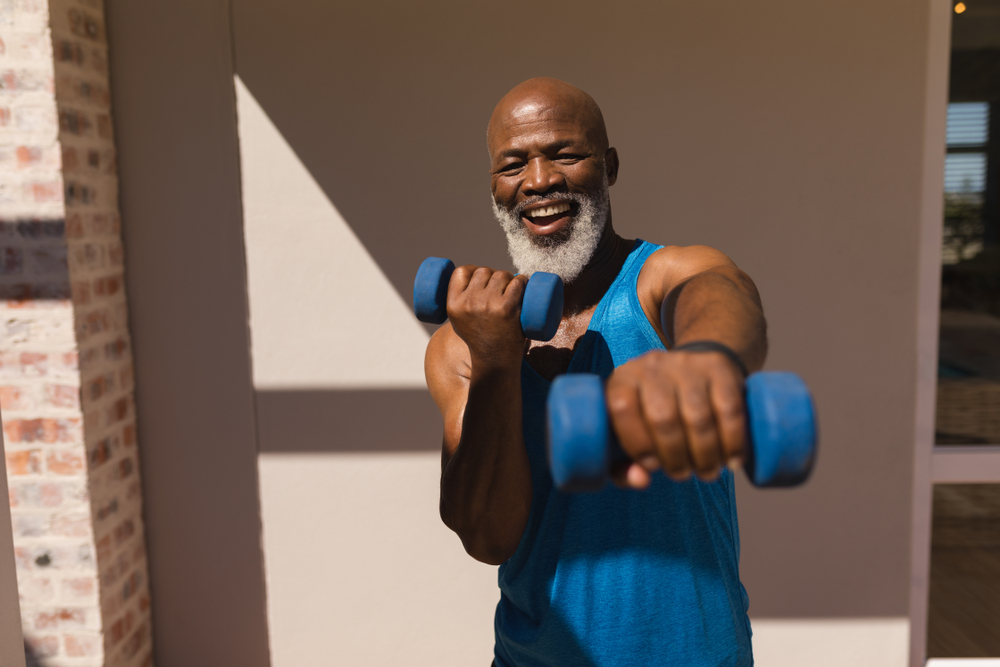
Tip 3: Eat a healthy diet
A well-balanced diet that includes plenty of protein, vitamins, and minerals can support healthy hair growth, including beard hair. You should try to eat:
Lean protein
Growing a beard requires structural building blocks, so load up on the lean meats (or alternatives), fish, beans and pulses
Healthy fats
Calorie restriction and low-fat diets can lower testosterone, so give it a boost with oily fish, avocados, nuts and seeds
Fruits and vegetables
Loaded with antioxidants, fresh fruit and vegetables can combat some of the everyday damage that your skin and hair follicles encounter. They also contain vitamins and minerals, which can support your growing beard.
Consider supplements
Vitamin and mineral deficiencies are pretty uncommon, so long as you’re eating a balanced diet. However, there is some evidence to suggest that deficiencies in iron and vitamin D can affect hair growth.
You might see supplements for zinc and B vitamins recommended for beard growth, but there is limited evidence that they work. Still, if you’re worried about deficiencies and want to be extra sure, it’s worth exploring supplements for your overall health. Just make sure to do it under your doctor’s supervision.
Tip 4: Manage stress
This one is easier said than done! But research has shown that stress can disrupt testosterone production, slowing down beard growth. Try stress-reducing activities like meditation, yoga, or deep breathing exercises and make sure to manage your sleep and exercise routines.
Tip 5: Find a good skincare regimen
One of the best things about having a beard is developing your own beard maintenance routine- so why not start practising! Washing, cleaning and moisturizing your hair and skin helps to remove dead skin cells and debris, making room for beard growth and preventing any nasty bugs or ingrown hairs damaging hair follicles.
Beard oils and beard balm are popular choices as they moisturize the hair and skin and can promote a thicker beard. Just be sure to use nautral oils that aren’t too heavy on the skin.
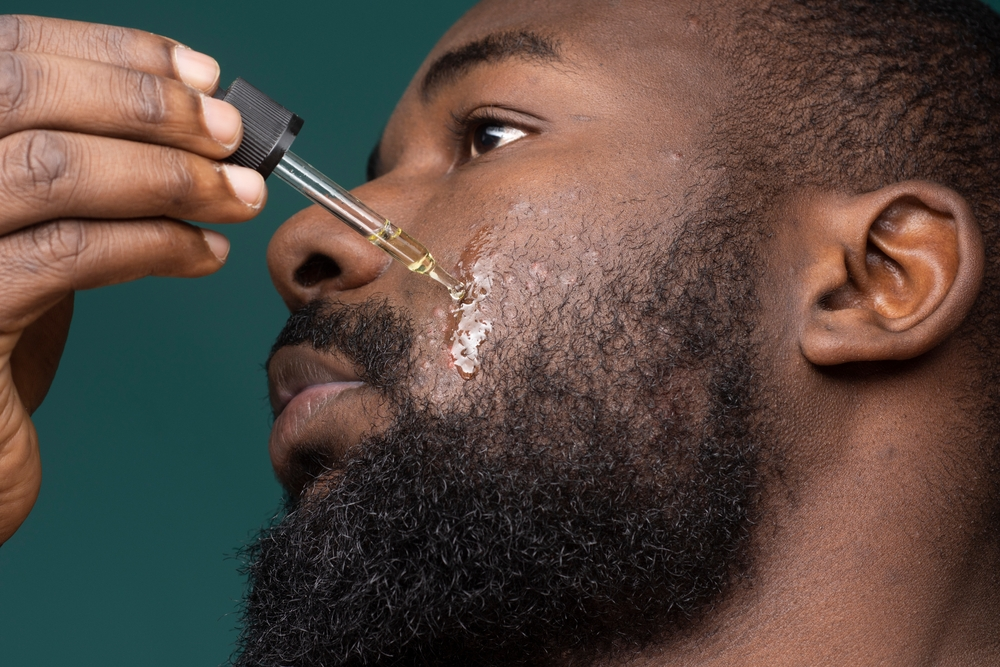
Oh, and while we’re here, shaving doesn’t actually affect hair growth, but trimming the hair down can give the appearance of a thicker beard.
Tip 6: Stop smoking
Smoking can reduce blood flow to hair follicles and cause damage, which can slow down beard growth.
It’s important to keep in mind that beard growth is largely determined by genetics and can vary greatly from person to person. While these tips can promote healthy beard growth, it’s important to be patient and let your beard grow at its natural pace.
Why is my facial hair not growing?
If you’re doing everything right but still aren’t see results, there might be an explanation.
Firstly, some people are limited to peach fuzz through no fault of their own- it’s just the genetic roll of the dice. Your genes set everything from natural testosterone ranges to hair follicle sensitivity, so if smooth chins run in your family, there are limited options.
Beard growth can also be affected by skin conditions like acne, so if you’ve noticed affected areas looking more sparse then speak to your doctor about managing the symptoms.
Finally, it’s worth remembering that beard growth is a slow process. While you might try everything to make your beard grow faster there is only so much you can do, so be patient!
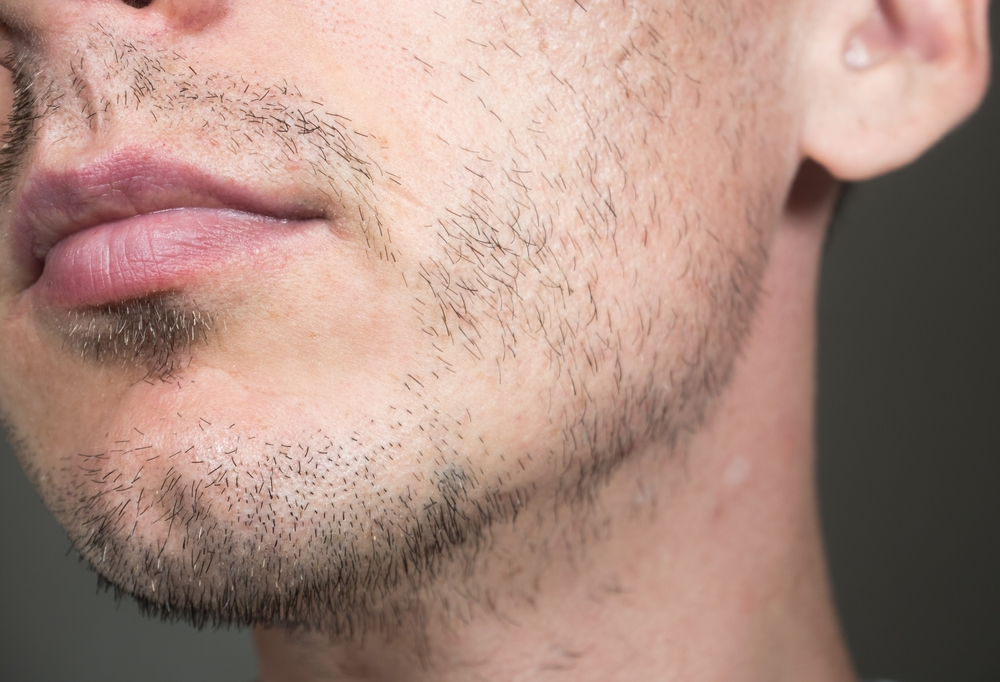
Are there any beard growth treatments?
While there are lots of things you can do to encourage beard growth, there is currently no actual licensed treatment to promote hair growth beyond your scalp.
A drug called minoxidil, effective for male pattern baldness, has been investigated as a topical medication for beard growth. Minoxidil stimulates hair growth by increasing blood circulation to hair follicles and can help hair grow thicker and faster.
Unfortunately, there isn’t really much evidence for its use in facial hair and, in all likelihood, applying it to your face will probably increase the likelihood of side effects.
Hopefully, we’ll see an effective treatment licensed for beard growth soon.
Key takeaways
Beard growth is largely determined by your genetics and testosterone, so some men will never have the full, thick, long beard they’ve always dreamed of. Maintaining healthy skin, supporting a balanced lifestyle and managing stress can go a long way to supporting your growing beard but, ultimately, there’s no miracle cure. At least not yet.
While we’ve ensured that everything you read on the Health Centre is medically reviewed and approved, information presented here is not intended to be a substitute for professional medical advice, diagnosis, or treatment. It should never be relied upon for specific medical advice. If you have any questions or concerns, please talk to your doctor.



